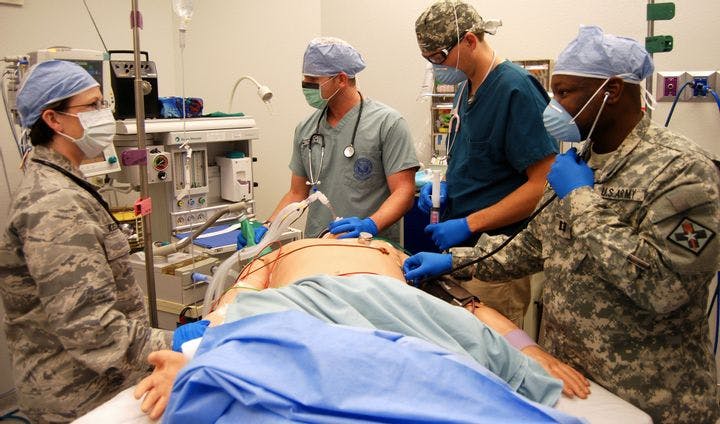Winter 2009
Something for the Pain
– Ruth Levy Guyer
Ruth Levy Guyer on the history of anesthesia.
Before the era of anesthetics, walking to the operating room resembled “going to a hanging,” in the words of one surgeon. So imagine what surgery was like for the hapless patient.
The changes that accompanied the advent of anesthetics in the 1840s—particularly in Britain and the United States—are the focus of Stephanie Snow’s Blessed Days of Anaesthesia. Anesthetics affected the practice and evolution of general surgery, dentistry, and military medicine, and altered childbirth. They also brought about social changes, as people came to understand that experiencing physical pain was not crucial to a moral life; indeed, sometimes a pain was just a pain.
The earliest anesthetics—ether, chloroform, laughing gas—had distinctive strengths, weaknesses, and uses. Dentists favored laughing gas—a short-acting agent—for their quick procedures. Ether required careful titration by a specialist. Chloroform was the easiest to use but also the most commonly associated with overdosing, addiction, and death.
Over many decades, the merits of anesthetics on the battlefield remained controversial. Were they too flammable for use near gunfire? Might their depressant effects hamper recovery in the severely traumatized? “The smart of the knife is a powerful stimulant and it is much better to hear a man bawl lustily than to see him sink silently into the grave,” wrote the British chief medical officer of the Crimean War in 1854, but others believed there were limits to how much trauma one shocked soldier could endure.
In the United States during the Civil War, anesthetics had a second use. Soldiers suspected of malingering were lightly anesthetized and then assigned tasks. Those who performed successfully were dispatched back into battle. Not until the 1880s, Snow notes, did the “concept of traumatic or post-traumatic neurosis become established as a medical category of disease,” accounting for soldiers who were physically able but psychologically scarred.
The elite revered anesthetics. Charles Darwin self-experimented with chloroform and in 1850 gave it to his wife, Emma, during labor, writing that he “kept her in a state of insensibility of 1 & 1/2 hours & she knew nothing from first pain till she heard that the child was born.” Physician John Snow, a central figure in the book and a distant relative of the author, administered chloroform to Queen Victoria during the births of her eighth and ninth children in the 1850s, giving rise to debate in The Lancet and other publications between those who found the use of anesthetics for normal birth dangerous and irresponsible and those who embraced the practice.
Anesthetic compounds were initially easy to purchase. Asthma and toothache sufferers self-administered them. Muggers and robbers used them to stun their victims. Individuals caught in compromising situations claimed to have been etherized to “account for being in disreputable places and company.”
In the 20th century, “the needle . . . replaced the mask,” Snow writes, and researchers developed many new compounds with single effects—analgesia, amnesia, muscle relaxation, sedation—and fine-tuned their uses, making surgeries and dentistry safer.
The story of anesthesia is fascinating, a mix of surprising social consequences, engaging philosophical debates, curious personalities, experiments gone right and wrong. But Snow, a researcher at the Center for the History of Science, Technology, and Medicine at the University of Manchester, is too often a stiff stylist, and frequent insider asides and digressions detract from many of the interesting tales she tells.
Today anesthesia is integral to Western medicine, though some—myself included—elect to forgo it when we can (in the dentist’s chair; during childbirth), realizing that every drug has unpredictable side effects. Others, of course, take anesthetics for the side effects. The 19th-century transcendentalists, for example, saw self-experimentation as a path to spiritual enlightenment. “You expand like a seed . . .” wrote Henry David Thoreau. “You exist . . . like a tree in the winter. If you have an inclination to travel, take the ether; you go beyond the furthest star.”
* * *
Ruth Levy Guyer teaches bioethics at Haverford College and writing at Johns Hopkins University, in the arts and sciences graduate program. She is a regular commentator on NPR’s Weekend All Things Considered, and is the author of Baby at Risk: The Uncertain Legacies of Medical Miracles for Babies, Families, and Society (2006).
Reviewed: Blessed Days of Anaesthesia: How Anaesthetics Changed the World by Stephan J. Snow, Oxford University Press, 226 pp, 2008.
Photo courtesy of Flickr/Army Medicine
